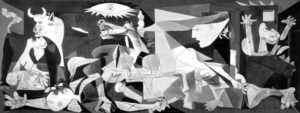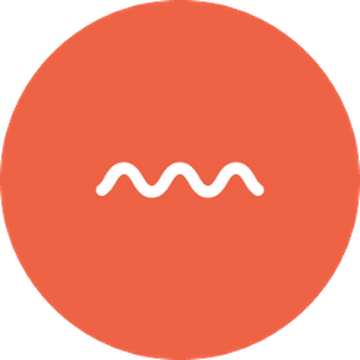Objective Design: The "Secret" to Designing Successfully
2018-08-20A fairy dies every time someone says, “design is subjective.” Please, stop spreading that myth before all the fairies are gone. This is a PSA about objective design; the only kind of design we have.
Since there’s so much confusion, let’s start by clarifying the difference between “subjective” and “objective.”
Subjective vs Objective
In a design context, the difference between “subjective” and “objective” depends on whether the end-result is based on opinions or facts.
Subjective: Based on or influenced by personal feelings, tastes, or opinions.
Objective: Not influenced by personal feelings or opinions in considering and representing facts.
Now, a few questions:
Is a bridge the result of someone’s opinion? What about a house? An airplane?
No, these things are designed according to facts. It could be quite devastating if their designs were left up to creative interpretation.
When a designer seeks to solve problems that we all have in common, then it’s quite easy to see that design is objective.
So why do so many people believe otherwise? To understand where this idea comes from, let’s follow it to design’s close cousin, art.
Is Art Subjective?
People often believe design is subjective because they believe art is subjective. However, that’s not entirely true either.
Guernica by Pablo Picasso
Art is only subjective when it’s purely an expression of the artist’s personal feelings, tastes, and opinions. Your reaction to art is subjective, but the art itself is not.
Most art is intended to be appreciated by others. Artists that have an objective to find favor with an audience must work objectively to meet that favor.
Those who create art subjectively typically become the “starving artists” of the world. As a career choice, artists must understand what people are willing to pay for, thus stepping into the world of objectivity. They must know how to produce “good” art if they hope to make a living.
Good Art vs Bad Art
If art is subjective, then there would be no possible way to distinguish good art from bad art. However, here are a few questions to ponder:
- Would institutions exist to display good art if there was no such thing as good art?
- If art is subjective, how do auction houses always seem to find the paintings that sell for millions of dollars?
- Would we have a Billboard Top 100 if there was no way to objectively rank songs by how good they are?
- Why do we use the word “talent” to describe someone who is artistic or musically inclined?
People instinctively know whether they are good or bad at art. While one’s opinion of their own artwork is subjective, that opinion is molded by external validation.
Artists know their art is good when it’s generally perceived that way by their peers. That validation solidifies when their art is considered “good” by strangers who have no bias or reason to suggest otherwise.
In this way, we can determine whether art is good or bad, based on consensus. It’s a social science. The best artists in the world understand, to some degree, what their audience will enjoy and appreciate.
This super power gives them the ability to replicate success. Only those that do not understand this would claim that art is subjective.
The Science Behind Aesthetics
When someone suggests that design is subjective, they’re normally referring to the aesthetics of the design. However, even aesthetics can be approached objectively.
Both art and design share a common language called The Principles of Design. This language allows us to effectively communicate the aesthetics of a particular work, whether it be an oil painting or the user interface of a website. These principles include:
When someone concludes that a design is “aesthetically pleasing,” they are referring to one or a combination of these principles.
It’s nearly impossible to defend every design decision you make regarding aesthetics. However, it becomes much easier to do when you learn to speak the language of design.
Consider how emphasis is used to determine the single most important button for a layout in Google’s Material Design Spec.
From their website, we read:
A layout should contain a single prominent button that makes it clear that other buttons have less importance in the hierarchy. This high-emphasis button commands the most attention.
Notice how this statement is written as if it were a fact? It’s not the author’s opinion that emphasis commands more attention. This is just one example of how the principles of design can help you to design more objectively.
Design is About Solving Problems
The purpose of design, apart from aesthetics, is to manifest as a solution to an existing problem. The solution is only as good as the problem is defined.
For example, let’s imagine that an eCommerce website needs to generate more sales. This problem is not well-defined. A designer could propose various designs to increase sales, but without more information, it would be difficult to determine the “best” solution.
Designers, in this case, must wear their researcher hats to better define the problem. They may begin by asking questions, such as:
- Why do we need to increase sales?
- Have sales dropped recently?
- Why have sales dropped recently?
- Are customers having trouble finding products?
- Are there technical issues with the checkout system?
By asking questions the designer may arrive at the conclusion that customers never see the call-to-action button on the company’s most important sales page.
This is where hypothesis are formed and A/B testing is conducted. Such tests may include variants, such as:
- Changing the color of the call-to-action button to create more contrast
- Changing the text of the call-to-action button
- Changing the size of the call-to-action button
Although each of these affect the aesthetics of the website, it’s possible to objectively determine which variation, or combination of changes, is the most effective.
Levels of Objectivity
Regardless of how ugly a design may be, one cannot argue that design is subjective. Design exists to solve real problems, which inherently makes it objective. Rather than concluding that design is subjective, perhaps we should be more concerned with “how” objective we are with design.
It’s easy to design solutions, but you must be willing to go the extra mile if you want to design the best solutions. This would suggest that there are “levels of objectivity” that can be achieved with design.
- At the lowest level of objectivity, one would not be able to provide sufficient reasoning for most of their design decisions.
- At a moderate level of objectivity, one would be able to provide sufficient reasoning for some, but not all of their design decisions.
- At the highest level of objectivity, one would be able to provide sufficient reasoning for every design decision they make.
If you can objectively defend every design decision you make, then you are performing at the highest level of objectivity that one can hope to achieve.
Conclusion
Hopefully this post has shed some light on whether design is a subjective or objective endeavor. I hope you’re now convinced you that objective design is the only kind of design we have. What matters is how objective we are when designing.








